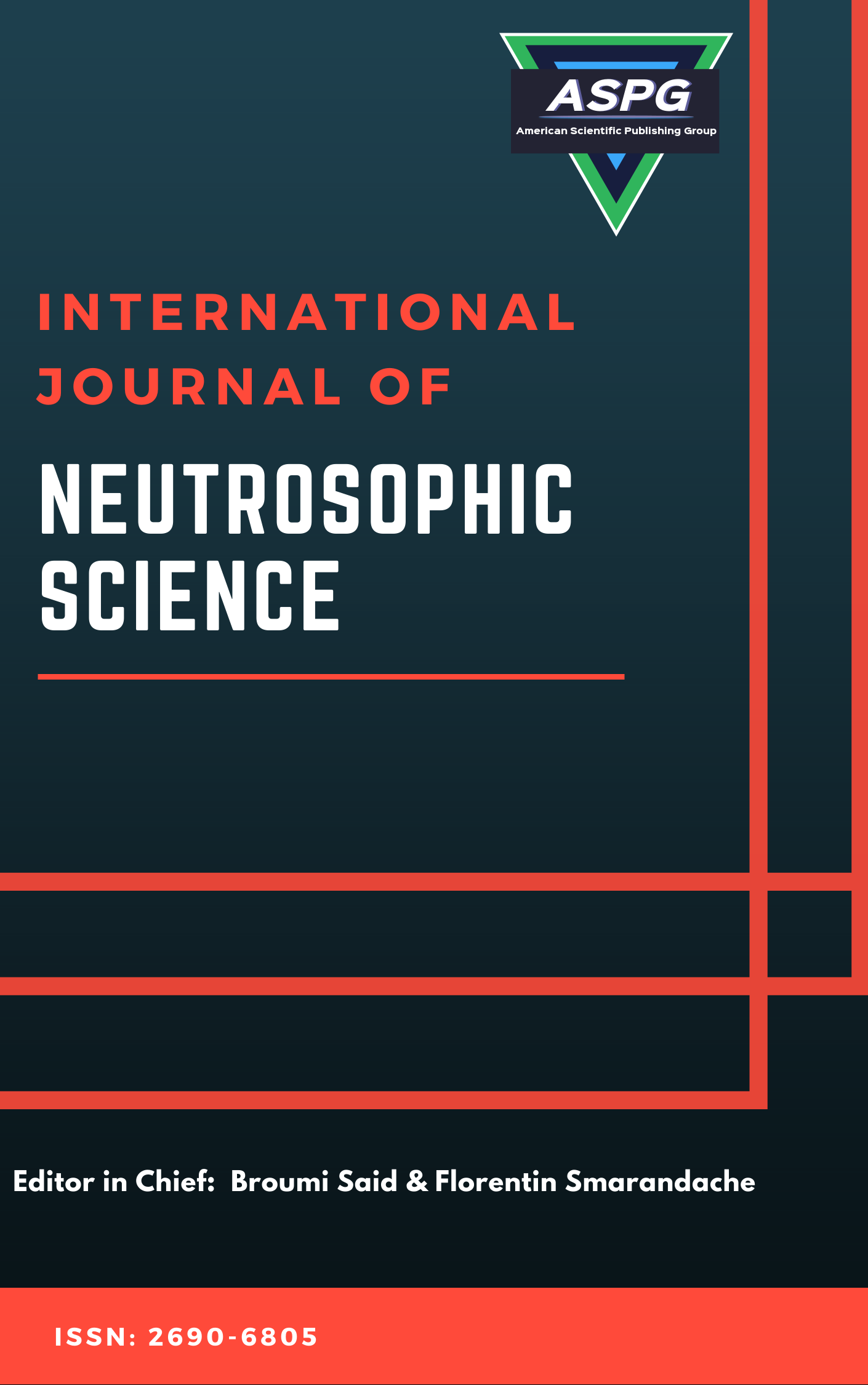

Volume 26 , Issue 2 , PP: 299-309, 2025 | Cite this article as | XML | Html | PDF | Full Length Article
Ali A. Atoom 1 * , Hamza Qoqazeh 2 , Eman Hussein 3 , Anas Owledat 4
Doi: https://doi.org/10.54216/IJNS.260223
It is essential to create new mathematical strategies to deal with everyday problems since they require a lot of data and ambiguity. The best tool for doing this is proper functions, which are the most common mathematical technique. In order to generate suitable functions, we investigate several set operators. A connection between symmetry and certain types of proper functions and their classical topologies can be made. As a result of this symmetry, we can examine the traits and behaviors of traditional topological notions through settings, and vice versa. We describe a new class of proper functions in this paper and launch a preliminary investigation into them. These functions are referred to as pairwise local proper functions and pairwise local Lindel¨of proper functions in bitopological spaces. In general topology, we also establish the connection between this new class of proper functions and other classes of generalized functions already in existence. Regarding the new ideas, a number of relationships, necessary and sufficient conditions, examples and counter-examples are provided. In addition, a different argument for the pairwise regularity of a pairwise Hausdorff and pairwise locally compact bitopological space is presented. As part of this research, we also look at the images and inverse images of specific bitopological features under these functions. A few product theorems pertaining to these concepts were finally discovered.
Bitopological spaces , Pairwise locally compact , Pairwise local lindelö , f , Pairwise proper function , Pairwise locally proper functions , Pairwise local Lindelö , proper functions
[1] N. Abualkishik and H. Hdeib, Pairwise Locally Compact Space and Pairwise Locally Lindel¨of Space, Turkish Journal of Computer and Mathematics Education, vol. 12, no. 6, pp. 3882–3886, 2021.
[2] A. A. Atoom, H. Qoqazeh, and N. Abu Alkishik, Lindel¨of Perfect Functions, JP Journal of Geometry and Topology, vol. 26, no. 2, pp. 91–101, 2021.
[3] S. Balasubramanian, Generalized Separation Axioms, Scientia Magna, vol. 6, no. 4, pp. 1–14, 2010.
[4] S. Balasubramanian and M. Lakshmi Sarada, GPR-Separation Axioms, Bull. Kerala Math. Association, vol. 8, no. 3, pp. 157–173, 2011.
[5] M. Caldas, A Separation Axioms Between Semi-T0 and Semi-T1, Mim. Fac. Sci. Kochi Univ. Ser. A (Math), vol. 18, pp. 37–42, 1997.
[6] M. Caldas, D. N. Georgiou, and S. Jafari, Characterizations of Low Separation Axioms via α-Open Sets and α-Closure Operator, Bol. Soc. Paran. Mat., vol. 21, no. 1/2, pp. 1–14, 2003.
[7] M. Datta, Projection Bitopological Spaces, J. Austral. Math. Soc., vol. 13, pp. 327–334, 1972.
[8] R. Engelking, General Topology, Heldermann Verlag Berlin, 1989.
[9] F. Bani-Ahmad, O. Alsayyed, et al, Some New Results of Difference Perfect Functions in Topological Spaces, AIMS Mathematics, vol. 7, no. 11, pp. 20058–20065, 2022.
[10] P. Fletcher et al., The Comparison of Topologies, Duke Math. J., vol. 36, pp. 325–331, 1969.
[11] A. Fora and H. Hdeib, On Pairwise Lindel¨of Spaces, Rev. Colombiana de Math., vol. 17, pp. 37–58, 1983.
[12] P. Gnanachandra and P. Thangavelu, PGPRD-Sets and Associated Separation Axioms, Asian Journal of Current Engineering and Maths, vol. 3, pp. 91–93, 2012.
[13] I. L. Reilly, "Zero dimensional bitopological spaces," Indagationes Mathematicae, vol. 35, pp. 127–131, 1973.
[14] S. Jafari, On Weak Separation Axiom, Far East J. Math. Sci., vol. 3, no. 5, pp. 779–789, 2001.
[15] J. C. Kelly, Bitopological Spaces, Proc. London Math. Soc., vol. 13, pp. 71–89, 1963.
[16] A. Killiman and Z. Salleh, Product Properties for Pairwise Lindel¨of Spaces, Bull. Malays. Math. Sci. Soc., vol. 34, no. 2, pp. 231–246, 2011.
[17] N. Krolevec, Locally Perfect Mapping, Soviet Math. Dokl., vol. 8, pp. 4–6, 1967.
[18] P. E. Long, An Introduction to General Topology, Charles E. Merrill Publishing Co., Columbus, Ohio, 1986.
[19] S. I. Mahmood, On a Bitopological (1,2)-Proper Functions, I.A. Jour., vol. 26, no. 2, 2013.
[20] J. Marin and S. Romaguera, Extracta Mthe, Maticae, vol. 8, no. 2, pp. 156–161, 1993.
[21] W. J. Pervin, Connectedness in Bitopological Spaces, Ind. Math., vol. 29, pp. 369–372, 1967.
[22] H. Qoqazeh, KC-bitopological spaces, AIMS Mathematics, vol. 9, no. 11 pp. 32182-32199, 2024. [23] I. Reilly, Bitopological Local Compactness, Mathematics, University of Auckland, Auckland, New Zealand, 1972.
[24] M. Sacgrov, On Bitopological Space, Retrospective Theses and Dissertations Paper, vol. 26-71, no. 888, 1971.
[25] H. Singh and S. Mishra, Some Results on Pairwise Locally Compact Bitopological Spaces, Advances in Mathematics: Scientific Journal, vol. 9, no. 12, pp. 10639–10647, 2020.
[26] D. Somasundaram and G. Balasubramanian, Locally Lindel¨of Spaces, Madras University, Coimbatore, 1979.
[27] D. Sreeja and C. Jananki, On πgb−Sets and Some Low Separation Axioms, International Journal of Engineering Research and Applications, vol. 2, no. 5, pp. 031–037, 2012.
[28] L. A. Steen and J. A. Seebach, Counterexamples in Topology, 2nd ed., Springer New York, 1978.
[29] J. Tong, A Separation Axioms Between T0 and T1, Ann. Soc. Sci. Bruxelles, vol. 96, no. II, pp. 85–90, 1982.
[30] I. A. Vainstin, On Closed Mappings, Zanhekii Mock. Vhnb., vol. 155, pp. 3–53, 1952.